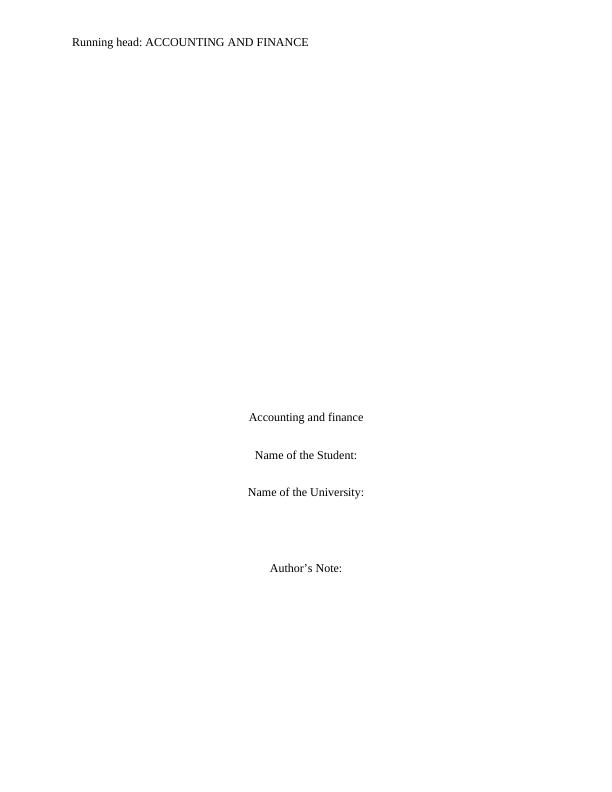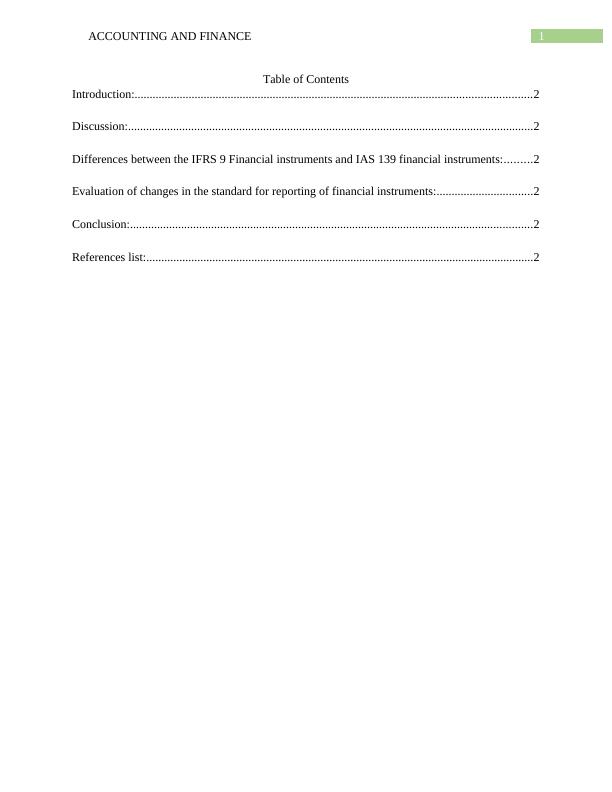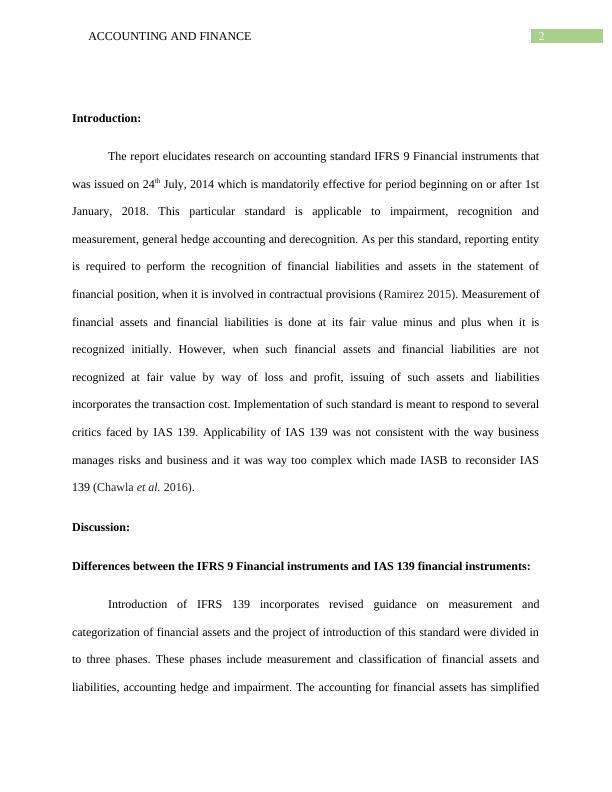IFRS 9 Financial Instruments vs IAS 139 Financial Instruments
Added on 2023-06-08
9 Pages1779 Words345 Views
End of preview
Want to access all the pages? Upload your documents or become a member.
IFRS 9, Impairment of Non-Financial Assets, Income Taxes - Notes to Financials
|9
|1768
|66
Financial instruments Reclassifications
|13
|2817
|31
The Australian Accounting Standards
|5
|885
|61
Impact of IFRS 9 on Financial Assets and Liabilities of QBE Insurance
|13
|3114
|341
Identification of Changes and Development in the Financial Reporting Environment
|4
|665
|112
Accounting Theory and Current Issues Assignment
|13
|2276
|17



